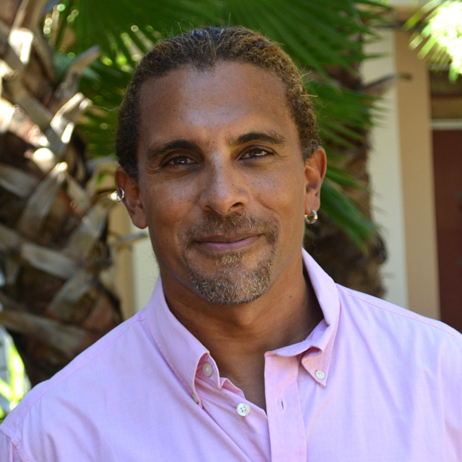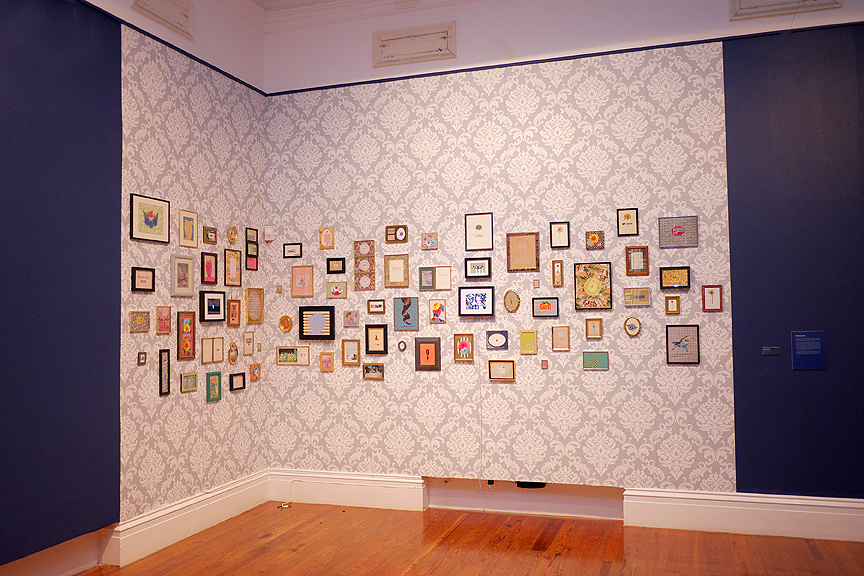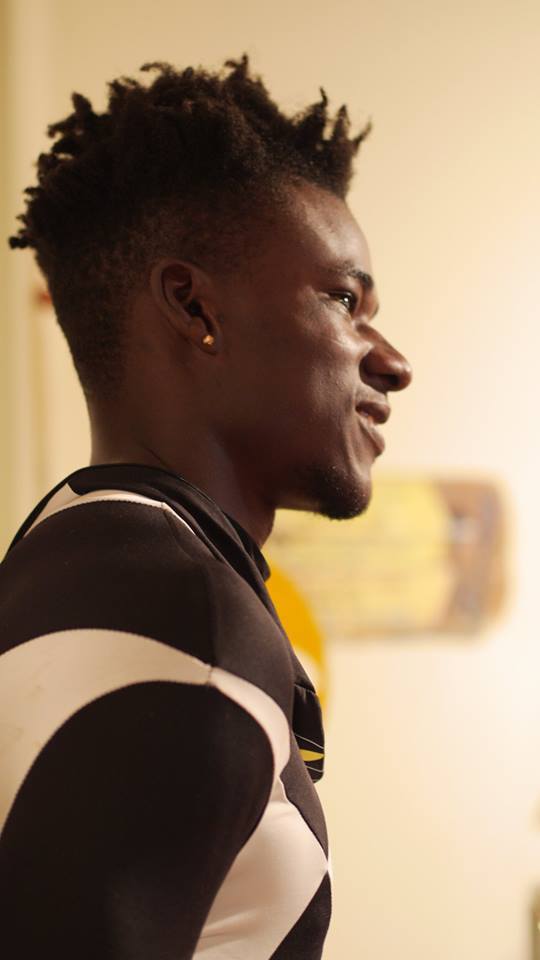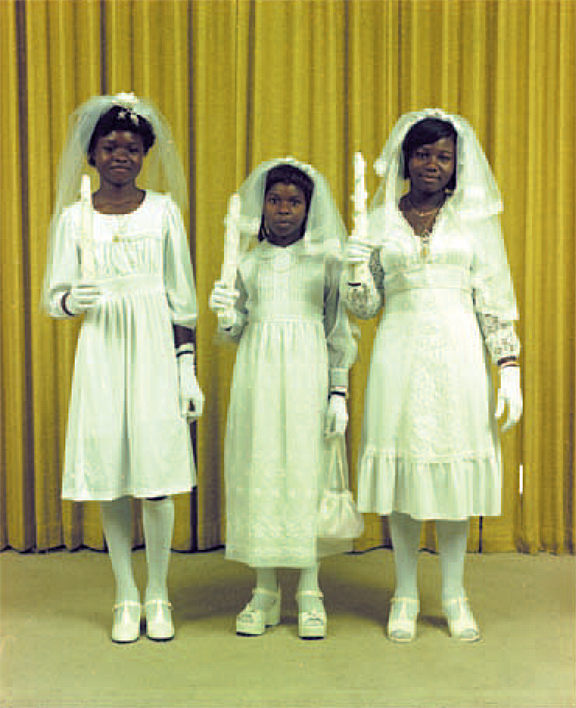|
Smith & Benjamin’s ‘BAHAMIAN ART & CULTURE’ Issue No. 294 Sharing Art & Cultural News of The Bahamas for 18 Years • • • • CLICK HERE to see onli
|
|
Smith & Benjamin’s
‘BAHAMIAN ART & CULTURE’
Issue No. 294
Sharing Art & Cultural News
of The Bahamas for 18 Years
• • • •
CLICK HERE to see online version.
• • • •
COVER IMAGE:
“The Divine Venus Series” (2016)
by Bahamian artist April Bey
(Four hand-sewn scrolls of Ghanian Hitarget
Chinese fabric and acrylic paint on laser print / 36" x 144")
• • •
|
Friday, February 3rd, 2017 |
Dear Reader,
Due to continued and vexing issues with internet and electricity in our area, we are limited in what we have been able to present and delayed in sending out today’s issue. We apologise for this inconvenience. Thanks so much for your understanding.
Dionne Benjamin-Smith
Editor & Publisher
Bahamian Art & Culture eMagazine |
W O R K S H O P :
Just Another
Version of You:
A Workshop by
Dede Brown
TOMORROW:
Saturday Feb 4th
10am to 1pm
National Art Gallery
of The Bahamas
West Hill Street
Learn to create miniature three dimensional mixed media portraits loosely based on Dede Brown’s NE8 piece. The workshop is open to adults and kids age 12 and up. Teachers are also invited to attend as this will serve as a beginners course to creating mixed media artwork.
Dede is an interdisciplinary artist who works in painting, photography, mixed media, sculpture and installation. Her work often focuses on depicting emotionally driven thoughts and narratives through portraiture and figurative drawings and paintings. Many of her compositions are inspired by images of women in popular culture. More recently, she has begun exploring new subjects and mediums, venturing further into more experimental and conceptual works, which explore various topics relating to human behavior, experience and existence.
Things to bring to the workshop: Magazines and Photos
Cost for workshop: $10–Age 12 & up / $25–Adults
Maximum capacity: 40
To sign up for the workshop, please contact Abby Smith at asmith@nagb.org.bs or call 328-5800.
CLICK HERE for the workshop’s Facebook page. |
F I L M :
Nobody to Somebody: Bert Williams Film Pioneer
Feb 20-23, 2017
Galleria Cinemas
Mall at Marathon
Join us at Galleria Cinemas Feb 20th–23rd for the exhibition entitled “Nobody to Somebody: Bert Williams Film Pioneer,” a celebration and exhibition of the legendary, pioneering Bahamian musical theater performer and recording artist Bert Williams. The event will screen the film “Lime Kiln Club Field Day” also known as “Bert Williams: Lime Kiln Field Day” is a 1913 American black-and-white silent film starring Williams and believed to be the oldest surviving film to feature actors of African descent. “Lime Kiln Club Field Day”, was Williams’ primary attempt at a silent film, featuring his iconic depiction of the controversial “black face” caricature.
The exhibition, lecture and screening for the general public will be held at Galleria Cinemas, Marathon Mall on Wednesday, Feb 22nd at 7pm with Student Matinees running from Feb. 20th–23rd.
CLICK HERE to visit event’s Facebook page. |
Our “According to...” section is where we publish
the writings of persons from the community who express
their thoughts, ideas and experiences in the arts. |
 Dr Ian Bethell-Bennett |
According to...
Dr Ian Bethell-Bennett
Dr. Ian A. Bethell-Bennett is Dean of the Faculty of Liberal and Fine Arts in the School of English Studies at The University of The Bahamas. He has written extensively on race and migration in The Bahamas, cultural creolisation and gender issues. His writings often speak to the curative and transformative properties of art to bring beauty, peace and healing to communities.
• • • |
 Giovanna Swaby, “I learned in Passing”, Collage, Video, Found Objects. Installation view at the National Exhibition 8 at the National Art Gallery of The Bahamas. 2016. |
|
 Giovanna Swaby. “I learned in Passing (detail)”. Collage, Video, Found Objects. Installation view at the National Exhibition 8 at the National Art Gallery of The Bahamas. 2016. |
Owning our image
Radical
reclamation
of self
by Dr Ian Bethell-Bennett
Images have always been controlled by those in power. They have been used to represent us in particular ways that we usually have no control over. During slavery, blacks were depicted in a specific manner, and black women were always rendered either as workhorses, conniving thieves, jezebels, or wanton women, who could not control their bodies.
These women belonged to slave masters and mistresses who abused them, as we can see in a text like The History of Mary Prince, a slave narrative that communicates Mary’s experiences in Turks Island, London, and on a salt farm in the southern Bahamas. Mary is allowed to speak as an enslaved African woman to forward the abolitionists’ agenda to end slavery. The story was carefully ‘controlled’ or ‘managed’ so as not to come across as too strong for public consumption and thereby to upset people’s tranquility.
Enslaved women were always trying to provoke their master’s sexual desires because they were vixens. According to many sources such as the masters’ wives and other upstanding folks in the colonial community, who saw the danger of blacks stealing the heads of otherwise good and noble white men. Thomas Thistlewood’s journals say otherwise, however; they demonstrate how the overseer was carrying on with these ‘terrible women’ while they were blamed for their animal-like desires. This image and perception continues today and it is a representation of black women, especially black, Caribbean women who are shown to be hyper-sexualized and lascivious. [...]
CLICK HERE to read full article in The Nassau Guardian. |
 Bahamian artist Veronica Dorsett |
Bahamian artist launches Go Fund Me campaign to raise funds for her last
year of studies
So many of us understand the struggle of trying to scrape together a means to attend university abroad, particularly when it comes to the arts and trying others to understand how vital our creative communities are to producing and understanding Bahamian culture. In this spirit of support, we’d like to ask our art community at large to help out—no matter how big or small.
Veronica Dorsett is an emerging artist from Grand Bahama, currently finishing up her bachelor’s studies at Emily Carr University of Art and Design in Vancouver, Canada. She’s in her last year, and if you can offer any assistance at all, please flex those philanthropy muscles!
Courtesy of the NAGB.
CLICK HERE to give generously to our fellow artist. |
 Haitian-born Bahamian artist Jeffrey Meris as the Black Power Ranger. “Artist presenting at open studios and talk at the NAGB on Jan 21st.” Courtesy of the NAGB |
Considering the African culture
Not forgetting the Asue.
Dr Ian Bethell-Bennett
Haitian-born, Bahamian artist Jeffrey Meris opened his project ‘Asue: 20/20’ in the Project Space Room of the NAGB on Saturday, January 21, and it drew a sizable crowd who came out to see how the word “Grace” would be interpreted. We often forget grace, and rather focus on the hard punishing kind of Christianity that is all about cruelty and refusing love, unlike the honest message of Christianity to give love and acceptance to all.
‘Asue 20/20’ explores the much-disparaged part of our culture that has allowed so many blacks to survive the cruel hardship of slavery and colonialism. Meris combines the commonplace with the not so commonplace; the odd, almost forgotten parts of our lives. He underscores the dichotomous reality of technology that brings us closer together, while simultaneously distancing us when we are congregated in the same place. It has also removed so much of our tactile lives from us. Many of us no longer feel the need to interact with those around; we do not see others as we walk consumed by our mobile devices that dictate events and guide our physical journeys, even when Google maps is often totally wrong and does not know that one road does not run straight through an area. We are almost unable to exist without the smarts of awareness and local tacit knowledge, but we do not realise the extent to which the local has been eclipsed by the distant, now close.
Meris’ exhibition is an interesting eye on what we are losing – trust and community – and what we are gaining –distance and technological connectivity. At the same time, during the talk, he expressed how his mother put her children through school by selling peanuts, dark roast, medium roast or light roast. [...]
CLICK HERE for full article in The Nassau Guardian.
CLICK HERE for photos of the opening at the NAGB Facebook page. |
 Photography by Bahamian photographer Sanford Sawyer (1978) for the NAGB exhibition "Developing Blackness: Studio Photographs of 'Over the Hill' Nassau in the Independence Era" (2008) curated by Krista Thompson, PhD. |
NAGB Artwork
of the month
Curtain call for the colonial
in Sanford Sawyer’s studio photographs
by the NAGB
Itchy white lace, decorative candles, pristine stockings, crisp gloves and fine gold chains. These three little brides — being married to the good Christian church they inherited as newfangled Bahamian post-colonial subjects, are a vision of all that is respectable and good and expected of a Bahamian of this time. Taken in 1978 by Sanford Sawyer, one of a few memorable Over-the-Hill photographers during the pre and post independence years, this image speaks volumes for what might seem so commonplace to us.
Pictures for a christening or any such ceremony are common, and many of us are the subject of staged photos throughout our lives – particularly as children. It is part of the Bahamian every day and ironically helps to show the mundane in spite of how produced these images are. This image is one of the lesser-known, and less visible parts of the National Collection – unless of course, you had the chance to see ‘Developing Blackness’ when it was shown at the NAGB in 2008. Curated by Krista Thompson Ph.D., the show contained work by Sawyer, as well as other photographers of the era including Cleveland Eneas, Antoine Ferrier, the aforementioned Sawyer, and Maxwell Stubbs, some of whom worked through 2008.
Why then would these images be considered artworks forming part of our National Collection when they are so clearly relics and memorabilia of someone’s personal collection? How is something so seemingly commonplace worthy of such scrutiny, devotion, and scholarship? [...]
CLICK HERE to read full article in The Nassau Guardian. |
Lyford Cay Foundations opens online
Arts Scholarship application
CLICK HERE to apply for the Harry Moore Arts Scholarship. |
April Bey’s “Divine Venus” |
 April Bey's "Divine Venus" (2016) |
The Divine Venus series explores the actual resilience of women as they navigate through high-impact experiences of the body, psyche and demands of womanhood. I’m fascinated in the ironic hypocrisy that lays in the expectations of women and in my case—black women to be sovereign and robust while at the same time inept and emotionally weak/unpredictable.
This work acts as a series of portraits of real women who were interviewed while in Ghana, West Africa and from whom each fabric was purchased from. These women sell knock off Chinese wax fabric (Hitarget) smuggled in through Benin and Nigeria because the wax fabric produced in their country can no longer be afforded by everyday people. The elite in Ghana—often foreigners—are the only consumers of Ghana made fabric while the women smuggle in Chinese fabric so they can maintain the fashion and culture of Ghana.
Each fabric coincides with these women most of whom wanted to be anonymous but their stories are uniquely powerful. Strips are hand-sewn as armor over the Venus of Wilendorf eventually creating a deity worth worship. |
Smith & Benjamin’s Bahamian Art & Culture eMagazine
Art & Culture were
created to uplift the
spirit of mankind.
Bahamian Art & Culture eMagazine
is an email magazine concentrating on the
art & culture of The Bahamas and the world around us. It is published once a week and is a service of Smith & Benjamin Art & Design, a design firm based in Nassau,
The Bahamas offering graphic design,
custom illustration, fine art, art marketing,
art brokerage and publishing.
Dionne Benjamin-Smith, Editor & Publisher:
dionne@smith-benjamin.com
Stephanie Shivers, Account & Office Manager:
stephanie@smith-benjamin.com |
|
|
|
|